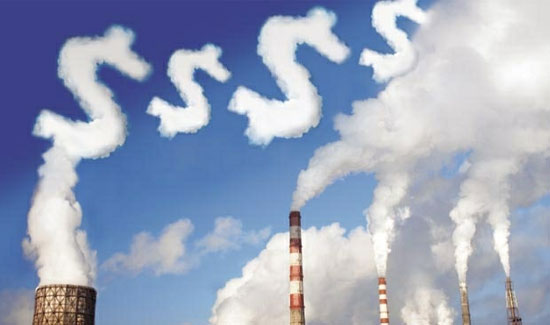In order for all of the nations to meet their commitments under the Paris climate-accord, we need policy that aligns technology that is on the shelf with consumers who will benefit from it. Carbon pricing is one clean way to accomplish that goal.
Canada’s Prime Minister Justin Trudeau kicked off October in grand style by unveiling a minimum carbon price for the country which will go into effect in 2018. The idea is to begin charging a minimum of around $8 per ton of carbon pollution produced in a province. This minimum will raised to nearly $40 per ton by 2022 in an effort to meet Canada’s Paris accord pledge to cut its carbon emissions by 30 percent compared to 2005 levels by 2030.
For now, Canada accounts for about 2 percent of global carbon emissions, which amounts to about 700 million tons per year. Yet the contribution of each of Canada’s 13 provinces and territories to this total is wildly different. For example, Alberta and Saskatchewan—the provincial seats of Canada’s massive oil and gas industry—contribute far more greenhouse gasses in both raw and per capita terms than provinces such as British Columbia or Nova Scotia (Alberta’s oil and gas sector alone accounts for roughly one-seventh of Canada’s total emissions).
Due to the significantly different ways each of Canada’s provinces contributes to the federal carbon budget, they will also be responsible for figuring out the way they will meet the minimum carbon price. This is likely to take the form of either a provincial carbon tax, which directly taxes polluters in proportion to their individual emissions, or a cap-and-trade policy, which essentially creates carbon pollution “allowances” which can be bought and sold by actors who are in danger of surpassing their carbon allowance or not using all of it.
Each approach to limiting carbon pollution has its benefits and limitations, and which method a province adopted will likely depend on a host of localized contingencies. This is perhaps one of the main strengths of Trudeau’s policy: it imposes a binding federal carbon goal, but still allows the individual provinces to self-determine how they will uphold their end of the deal.
Agencies/Canadajournal

 Canada Journal – News of the World Articles and videos to bring you the biggest Canadian news stories from across the country every day
Canada Journal – News of the World Articles and videos to bring you the biggest Canadian news stories from across the country every day


After all the publicity I still don’t understand the thinking behind the carbon tax. As I understand it, the Liberal government will take $10 of my money. We are told this will help curb carbon emissions but no one says how and no one has even mentioned a scientific project devoted to curbing carbon.Instead they mean to hand my $8 to the province I live in. Like Ottawa, my province has no science project for carbon curbs. But they now have my $8 . I am also given to understand that my province will now give me a tax rebate or some other goodie that will return $3.50 to me. What happened to the original point of the carbon PR campaign? Is there somehow less of it, or does letting money pass through bureaucratic fingers burn off CO2 in some subtle way? I just can’t figure it out.